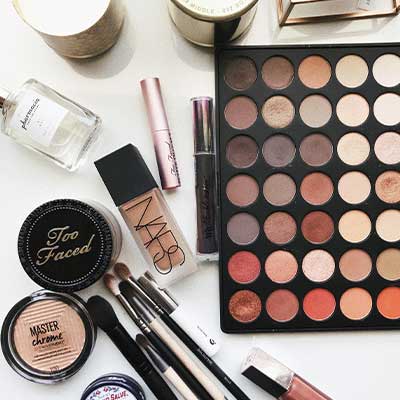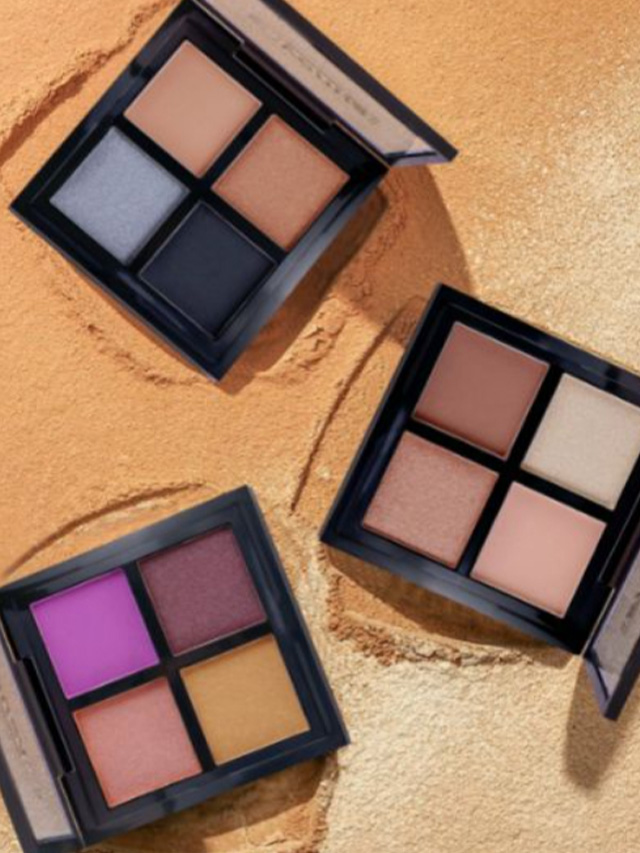Last Updated on May 30, 2024 by Nicole
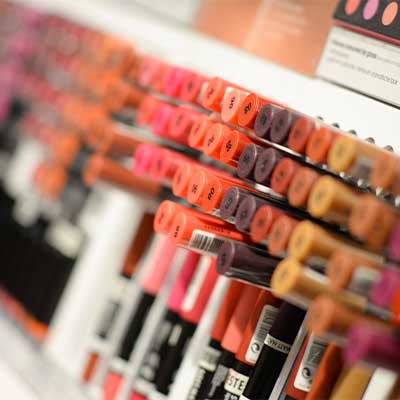
Listen up, makeup enthusiasts. The ingredients in your makeup matter! Over time, glam looks may also expose you to toxic ingredients that damage your health. While your face may be glowing on the surface, the skin irritation, endocrine disruptors, and cancer risk aren’t worth the makeup look.
- Makeup Brands Exposed. Where can I find ingredients in my products?
- What websites and apps can I use to check my makeup?
- What are Organic Products?
- What does “natural” mean?
- What is Cruelty-Free Makeup?
- Is My Makeup Toxic?
- The Dirty on “Clean Makeup Brands”
- The Toxicity of Popular Makeup
- Makeup Knowledge is Power
Makeup Brands Exposed. Where can I find ingredients in my products?
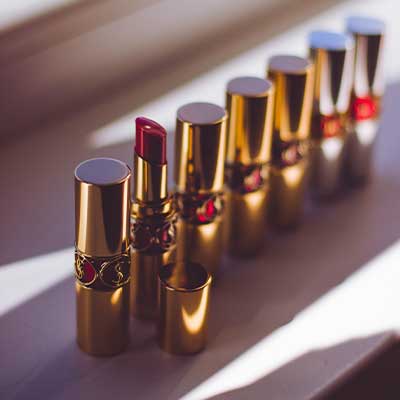
Bust out your makeup bags, we’re reading ingredients. The first step to finding safe ingredients in your products is digging into the makeup you already have. Now you might be thinking: I can’t pronounce half these ingredients, how am I supposed to know what they do? We’ll break that down step by step.
The easiest ways to find ingredients in your current makeup are on the packaging and the manufacturer’s website.
Packaging
We’re all guilty of buying at least one impulse primer because of its pretty packaging. But next time, put it down and read the back first. Just like the cereal aisle at the grocery store, you should read and check out the ingredients on the back before purchasing it. Chances are you have standards for your breakfast, so you should have standards for your makeup, too!
One important note: ingredients are listed in order of the largest and smallest concentration amounts. This can help you determine how much or how little of an ingredient is present in the product. You’ll also want to be familiar with known symbols on packages. Learn how to identify if a product is certified organic, vegan, or cruelty-free. We’ll learn more about what these terms mean later.
Manufacturer’s Website
Online shoppers take note, you can still check ingredients online on the manufacturer’s website! As you view foundation and mascara, their ingredients should be listed alongside the product page you’re looking at. Like the package, the ingredients are listed in order from the greatest to the smallest concentrations.
Before you slam that “add to cart” button, pay attention to the top ingredients with the highest concentrations. People with sensitive skin should keep a watchful eye on the top ingredients. You’ll want to drop any products that list essential oils or sulfates high on the list and opt for a clean product instead.
Once you’ve looked at the concentrations, try to make sense of the ingredients list. Look for anything in parentheses. Ingredients with long formal chemical names sometimes use parentheses alongside their well-known name. The ingredient “cera alba” may not ring a bell until you read in parentheses that it’s beeswax!
We can’t all be biochemists, so it’s okay if you don’t recognize every single ingredient right away. If you’re on the fence about a particular ingredient, turn to the wealth of knowledge on the internet for more information.
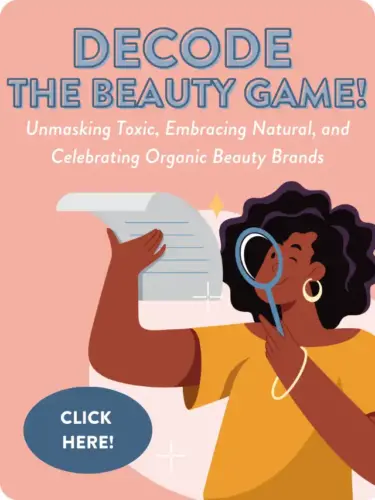
What websites and apps can I use to check my makeup?

Health-conscious researchers and makeup enthusiasts alike have come together to compile their cosmetic knowledge for the masses. There’s so much ingredient information out there that it can be dizzying. Check these reputable resources to help you make an informed decision about your makeup before purchasing.
Environmental Working Group
Founded in 1993, the Environmental Working Group is a non-profit organization dedicated to protecting public health. The EWG researches the safety of personal care products and calls out the toxicity of unregulated chemicals. They research chemicals so you can make healthier decisions when purchasing cosmetics. If you’re looking for product suggestions and information on certain ingredients, check the EWG.
FDA Regulations
In case you didn’t know, the FDA does not have to approve cosmetics before they hit store shelves. Yep, you read that right. But, two main FDA regulations exist: the Federal Food, Drug, and Cosmetic Act (FD&C) and the Fair Packaging and Labeling Act (FPLA). The FD&C classifies cosmetics as products intended to cleanse and beautify. The FPLA prohibits both misleading and adulterated products. From there, as long as a cosmetics company sells within these guidelines, they can sell their product.
Skinsafeproducts.com
AI isn’t just ChatGPT, it can help you understand ingredients too! Cue skinsafeproducts.com. Skin Safe is designed for people with sensitive skin, health-conscious consumers, and physicians looking for cosmetics suggestions. Because consumers lack federal guidance on ingredients, Skin Safe uses AI to classify sensitivity levels in products for greater transparency. Create a profile and get personalized suggestions as to what products are safe and ideal for your skin.
EWG’s Healthy Living App
\Bring the powerhouse of EWG’s knowledge with you through their Healthy Living app. As you’re shopping for cosmetics, scan the label with this app. The Healthy Living app can review its rating and suggest a different product with more natural ingredients instead. Over 120,000 food and personal care products are available in the app. Now that we know how to make sense of the ingredients in makeup itself, it’s important to understand the marketing buzzwords that many makeup brands use.
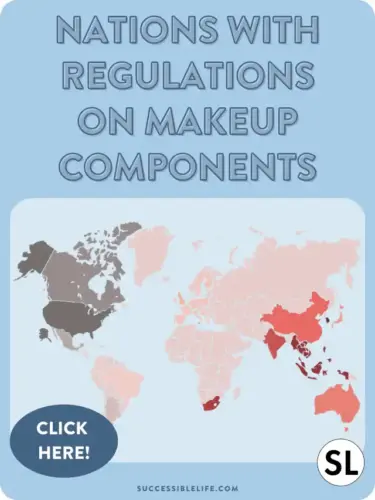
What are Organic Products?
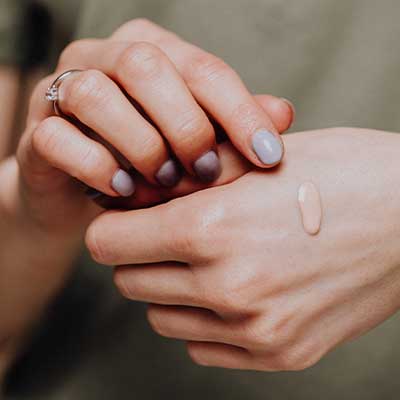
As you do your grocery shopping each week, you likely see the “organic” label on chicken and broccoli. Makeup brands want you to connotate healthy and clean food with their products. But you can’t take a bite of mascara, so what does “organic” really mean in the context of makeup? Organic means that none of the ingredients are synthetic, fertilized, or modified. However, you should know that the label itself on products doesn’t hold much weight.
According to the FDA, there is no formal definition for organic cosmetics. The “organic” label you see on agricultural products is regulated by the FDA. However, the same regulations do not apply to cosmetics or personal care products. The organic label could be a good indicator that the product you’re eyeing uses nontoxic ingredients. But more scrutiny is needed since the FDA can’t guarantee it.
So, what about green or chemical-free products? Environmentalists gravitate towards these eco-friendly products. “Green” is often synonymous with sustainable by using biodegradable or renewable sources. Likely to use only natural ingredients, green labels can help you find high-quality products. Take for example the company Green Beauty Cosmetics. Their cream blush received a “best rating from the EWG for using natural and sustainable ingredients!
What about chemical-free labels? Chemical-free products seem straightforward. Typically, these products are marketed as free from chemicals such as fragrances, parabens, and phthalates. They opt for naturally occurring ingredients instead. However, many argue that “chemical-free” is an impossible premise to promise consumers. Technically, air and water are chemicals, too. The chemical-free label is to be taken with a grain of salt, as it is a misnomer.
Often, chemical-free is another way to say “non-toxic.” The makeup brand Jane Iredale is known as being “chemical-free” in some circles, but what they’re saying is that their products don’t use any toxic ingredients. Their pigmented eye pencil uses jojoba oil as its top ingredient and doesn’t use any synthetic dyes.
Now that you know more about organic makeup ingredients, you’ll have an easier time seeking out organic makeup brands. One example of an organic makeup brand with scientifically backed ingredients is Tower28. Tower 28 uses clean ingredients with no fragrances or fillers. What sets them apart from empty labeling is transparency with an expansive list of the ingredients they don’t use. Brands like Tower28 use organic labeling to their advantage and back it up with scientifically sound evidence.
What does “natural” mean?
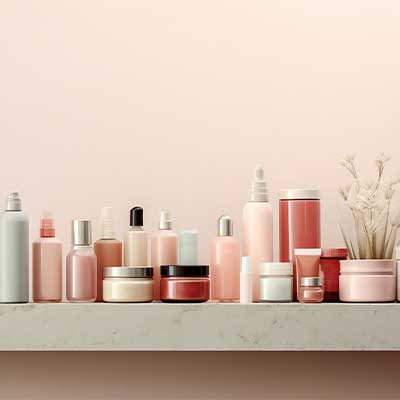
There’s a reason “glowy skin” is all the rage. In a world of toxic ingredients, beauty aficionados are on a mission to achieve dolphin-like smooth skin. Thus, natural beauty seems like the perfect elixir to achieve your #skingoals. Natural skin care is exactly what it sounds like. Ingredients are derived from nature, such as oats, seeds, and oils. Popular ingredients like aloe vera or cocoa butter are found in nature. If a product is natural, synthetic ingredients made in a controlled environment like a laboratory are rejected.
Natural ingredients are amazing when science backs them up as effective! Take for example the brand 100% Pure. True to their name, they create cosmetics and skincare with high concentrations of natural ingredients. Their Fruit Pigmented Cocoa Butter Matte Lipstick uses—you guessed it—cocoa butter as its main ingredient! Using natural ingredients like blueberries and rose petals, this natural-friendly brand delivers an innovative and gorgeous pigment to health-conscious beauty lovers.
A few things to note about natural products, though. Since brands like 100% Pure use high concentrations of natural ingredients, you may find some colors and consistencies vary across products. This isn’t a bad thing, but it may be different from the cosmetics you’re used to.
However, not all natural makeup brands are as good as their top players. Just because an ingredient is found in nature, it does not mean it always benefits your skin or health if the formulation is off. Dig into the natural ingredients and test out the texture of the product if possible. A balance between natural and synthetic ingredients is okay if they are both backed by science.
At this point, you may be thinking that “natural” and “organic” sounds about the same. The main difference between the two labels is that natural products can technically contain some chemicals. Meanwhile, organic is a step above natural. No pesticides, chemicals, or fertilizers are used for a product to be considered “organic.”
What is Cruelty-Free Makeup?
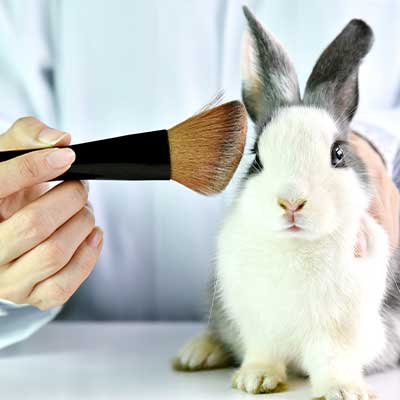
Ask any vegan out there. Finding quality vegan substitutes at their favorite restaurants can be challenging. Now imagine how tricky it can be to find truly vegan products in the Wild West of cosmetics. Vegans and animal lovers alike are likely drawn to makeup labeled as “cruelty-free.” It’s fair to assume no one is crazy about using animal-tested products. We all want to save the bunnies and buy cruelty-free, right? The reality of animal testing makes it a little more complicated than that.
Often depicting a rabbit alongside the label, many consumers consider these cosmetics to be free from animal abuse. This label came about because historically, many cosmetics were using animal testing in their labs. Manufacturers looking to advertise to animal-loving consumers use this label now to say they’re not currently testing their products on animals.
However, the idea that the cosmetic is entirely free from animal cruelty is not substantiated by the FDA either. If a company uses a third-party laboratory, for example, it still may be engaging in animal testing. Consumers concerned with the welfare of animals should research the company further before buying into any claims of cruelty-free makeup.
That’s why people concerned with the cruelty-free status of their makeup need to do their homework. An amazing cruelty-free and 100% vegan brand is Milk Makeup. Their award-winning Bionic Blush is completely vegan and uses plant-based collagen to pump up your skin’s texture. Bonus: they also use 90% natural ingredients like snow mushrooms!
With all this talk of natural and organic product labeling, it’s critical to note that cruelty-free is not synonymous with organic. Organic means that the ingredient is free from synthetic chemicals, fertilizers, and GMOs. Technically, an organic product can contain animal by-products. Prepare to break out your research skills if you’re on the hunt for cruelty-free products to make sure you’re truly getting the vegan product you want.
Is My Makeup Toxic?
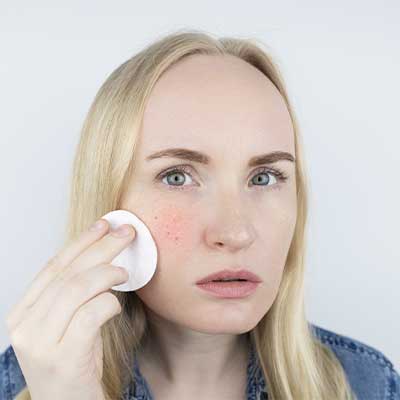
You’ve likely heard some buzz about toxic ingredients in makeup. The conversation intensified in 2021 when a group of researchers found “toxic forever chemicals” in over 231 samples of common makeup brands in Canada and the United States. Massive yikes. Some good came out of the study though, it got more consumers thinking about the ingredients in their cosmetics.
Toxic isn’t just a buzzword. Real toxicity exists in certain ingredients. Any product could be considered toxic if it contains ingredients that are known hazards to human health. From a minor rash to the risk of hormone disruptions and cancer, there is a spectrum of toxicity. That’s why it’s imperative to research common toxic ingredients found in cosmetics. When you’re examining the ingredients of your products, look out for these chemicals of concern.
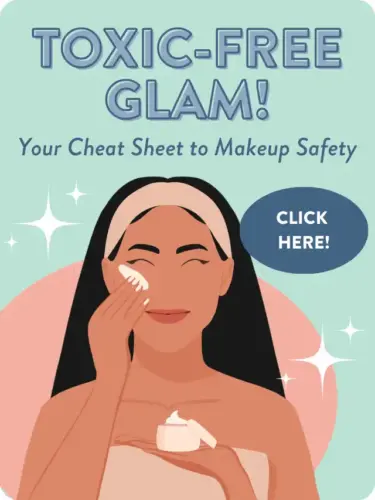
Teflon
Also known as polytetrafluoroethylene, Teflon creates that sought-after “smoothing” effect in foundation. It can be found in anti-aging products like powder and bronzer. However, consumers should exercise caution with this compound, as Teflon is linked to menstruation disruption, delayed puberty, and reproduction toxicity. While its link to cancer is inconclusive, there is evidence of immune response and inflammation issues from exposure to this compound.
Butylated hydroxyanisole (BHA) or butylated hydroxytoluene (BHT)
Butylated compounds known as BHA and BHT are all over cosmetics aisles. Most typically used as preservatives in cosmetics, butylated compounds come with a series of health risks. Strong evidence from the European Commission of Endocrine Disruption found BHA to be an endocrine disruptor. Some studies also found disruptions to organs, reproductive risks, and cancer risks in BHAs and BHTs.
Coal Tar Dyes
The idea of coal in your cosmetics may sound funky but make no mistake: Coal Tar Dyes are pretty common in cosmetics. Often made from artificial ingredients, Coal Tar Dyes are brownish-black materials present in many cosmetics. Sometimes coal tar dyes are synthetic, while others are derived from coal. Coal Tar Dyes are a type 1 carcinogen, a.k.a. it is known to be cancerous. Watch out for any ingredients starting with “CI” and a group of numbers. It’s a sneaky way to say it’s a coal tar dye.
Diethanolamine (DEA)
You can thank DEA for the luxurious bubbles in your shampoo. Diethanolamine or DEA is an emulsifier used to help products foam up. Unfortunately, the agent is known to be harmful to the scalp, even though it produces satisfying foam. Your scalp may feel itchy or dry after using it. Some studies on animals suggest that DEA is cancerous to them, but a cancerous link was not found in humans. Ecofriendly people should also know that the Environmental Protection Agency considers DEA a hazardous air pollutant.
Formaldehyde
Mortuaries seem like appropriate places to find formaldehyde. Formaldehyde in your hair products? Not so much. Often used as a preservative in cosmetics, formaldehyde is irritating once absorbed by the skin. It’s most often used in hair-smoothening products or nail polish. Some people experience contact dermatitis or itchy eyes once in contact with formaldehyde. Even low levels of formaldehyde can cause an allergy over time. Since formaldehyde is unregulated by the FDA, it’s up to consumers to do their research into the chemical.
Parabens
Parabens have a bad reputation and are ripe with controversy. Some initial research on cancer and hormones have scientists rightfully concerned, yet they’re ubiquitous in cosmetics. Like formaldehyde, it is used in small amounts as a preservative. While parabens may preserve the life of your mascara, they can also disrupt your hormones. Parabens may have hormone disrupters that affect fertility which could increase cancer risk.
Fragrance Ingredients
Growing up, we all used a moisturizer that smelled like vanilla. Now it’s time to pitch all those fragrances, no matter how delicious they may smell. Even if a skincare brand says a lotion is unscented, it may have undisclosed fragrances anyway. This is because companies don’t have to disclose all information about fragrances as it can be considered part of their proprietary trade secrets. Some people are sensitive or allergic to fragrances in products and should be aware of them possibly being unlabeled in their consumer products.
Polyethylene Glycols or PEG Compounds
We all love a moisturizer that seals in all your nightly serum and retinol. But watch out for PEGs. Plenty of manufacturers use polyethylene glycols (or PEGs) as emollients in their moisturizers. It’s a common ingredient that helps meld the waters and oils of a moisturizer together. While PEGs easily penetrate the skin when added to moisturizers, they also can harm the skin as well. In the production phase of PEGs, they often mix it with ethylene oxide which is a cancer-causing chemical. Ethylene oxide may not be present on the ingredients list, but the production of PEGs implies its possible existence in your product.
Petrolatum or Petroleum Jelly
Good old petroleum jelly still sits in its usual spot in your grandmother’s medicine cabinet. Despite its nostalgic feel, it’s time to show her this article. Petroleum jelly has a long history in skincare, so it sounds safe. When using refined petroleum jelly, it produces the byproduct of petrolatum with no known health risks. Unrefined petroleum jelly, however, can produce polycyclic aromatic hydrocarbons or PAHs. PAHs are a known carcinogen linked with cancer development. While the EU requires refining history for petroleum jelly to be sold, there are no such regulations in the United States.
Siloxanes or Silicones
Dry skin sufferers rejoice when they find a moisturizer that sticks to their skin. Make sure it’s free from siloxane or silicones. Siloxanes and silicones are both used to soften and create a barrier of moisture around the skin. Yet, they are not quite the same. While silicone is naturally occurring, siloxane is a chemical derived from silicone. Because both compounds create a barrier on your skin, they also repel water and make it hard to wash off. Like some other toxic ingredients, silicones and siloxanes can also cause hormone disruptions. There is also some controversy that these compounds are hazardous to the environment when they swirl down your drain.
Sodium Lauryl Sulfate (SLS)
While sodium laureth sulfate (SLES) is commonly found in shampoos to create a foaming effect, stay aware of its closely related cousin sodium lauryl sulfate (SLS). Head over to the bathroom and you can find SLS in your toothpaste, creams, lotion, and more. There are also some unsubstantiated claims that this ingredient could be a carcinogen and possibly cancer-causing. However, most studies classify SLS as an irritant from numerous studies on animals. People with sensitive skin should steer clear of products with SLS to avoid irritation.
Triclosan
Originally added to products to reduce the possibility of bacterial contamination, triclosan is present in many household cosmetics. You’ve likely been exposed to triclosan while washing your hands with antibacterial soap, using deodorant, and you guessed it…while applying your makeup. Numerous studies with animals showed a reduction in thyroid function after using triclosan. While the FDA the link between humans and thyroid dysfunction is not present, they do warn of a possible link between triclosan and skin cancer.
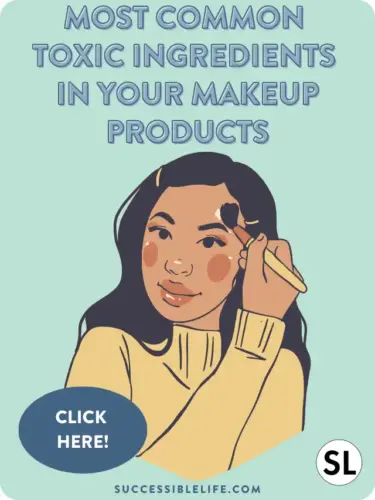
The Dirty on “Clean Makeup Brands”
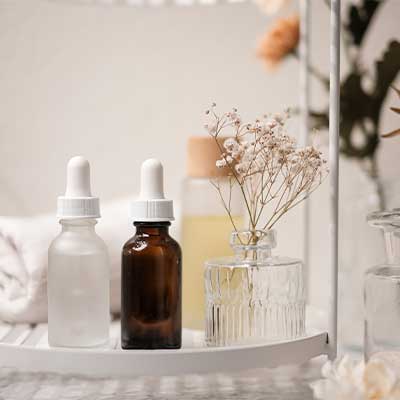
After all this talk of dangerous chemicals in everyday products, you’re probably ready to purge your entire makeup bag. It makes sense that consumers gravitate toward a “clean” label! Clean makeup markets itself as free from harmful chemicals. You’ll see this label plastered all over makeup stores as it appeals to consumers’ skepticism of the toxic chemicals in their cosmetics. Like the other labels we discussed “clean makeup” also requires a level of scrutiny.
The problem with clean beauty is no one can agree on what it is. Like the FDA, “clean beauty” is not regulated either. Essentially, any makeup brand can claim that they’re selling clean beauty products since no one can agree on exactly what that means. The result is consumers are fed misinformation. The European Union banned labels like “chemical-free” or “toxin-free because of how confusing they can be.
Regardless, the desire for better ingredients has become popular among consumers. Cue the demand for clean beauty at mainstream stores. Now Sephora even allows consumers to filter their site by “clean” products only. This filter is a great start when you’re looking for new products.
Turn to online reviews to find truly clean products that aren’t just trying to market to you. An amazing example of a popular and functional makeup brand is Jones Road. The Mascara is highly rated by Byrdie and designed for makeup lovers with high standards. Yet, they’re transparent about their clean and cruelty-free label. Feel good about using mascara made from Vitamin E! As you continue to learn more about the purpose of ingredients in your makeup, you’ll feel empowered to dig deeper into clean products.
The Toxicity of Popular Makeup
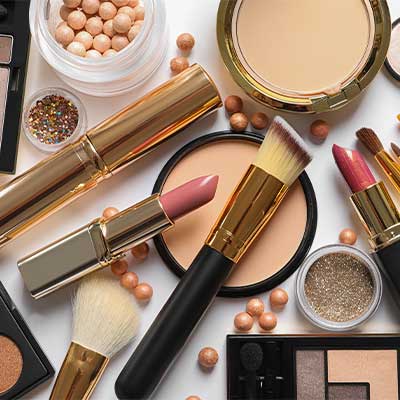
One minute you’re heading home from Sephora with a new stockpile of pigmented brow products. The next minute you’re scrolling TikTok, and influencers tell you that Kylie Jenner’s “no-brow” new brow product is in. Before you drop everything to buy the latest and greatest product, learn to prioritize ingredients over what’s popular. Just because a product is popular, doesn’t mean it’s safe to use over time. Check out a few examples of popular dangerous products with unsavory ingredients and substitutes with clean makeup brands.
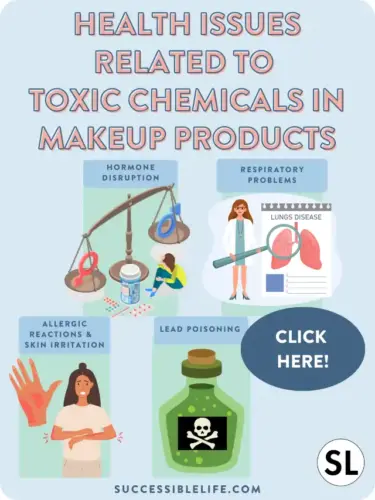
❌ The Offender: NARS Lipstick
While consumers have a plethora of vibrant lipstick colors to choose from, NARS is notorious for using ingredients that are not cruelty-free or clean. Conscious Bunny notes that NARS’ parent company tests on animals, so the brand itself is not vegan despite marketing some products as such. Additionally, their lipsticks are known to contain harmful chemicals like lead and polyethylene, leading to possible cancer exposure.
✅ The Dupe: Saie Lip Blur
Saie offers clean products with transparency about the ingredients they use. Their Lip Blur product is hydrating and pigmented lipstick and a better choice than NARS lipstick because it’s free from sulfates, fragrance, and BHA. Hover over each ingredient for an explanation of its purpose on their website.
❌ The Offender: CoverGirl TruBlend Matte Made Liquid Foundation
Generations of women may have used CoverGirl, but the truth about some of their toxic ingredients has recently come out. CoverGirl was sued in 2022 for falsely advertising their product as safe when it contained harmful poly-fluoroalkyl substances or PFAs. Currently, their TruBlend foundation contains polyethylene which is linked to cancer.
✅ The Dupe–Merit The Minimalist Perfecting Complexion Stick
Merit is a makeup company that lives up to its name. The Complexion Stick doubles as a foundation and concealer due to its buildable formula. The product is also clean, vegan, and cruelty-free by EU standards. Celebrity esthetician Biba de Sousa assists in the formulation of products, so consumers are assured they’re getting expert-reviewed quality.
Makeup Knowledge is Power
A lack of regulation and a myriad of labels make for a perplexing experience when buying new cosmetics. It doesn’t help when makeup brands are dishonest about how safe their product is. The next time a makeup product is trending, you’ll know what’s up. With the power of EWG on your side, check the ingredients before purchasing. The clean dupe you choose instead may not be viral, but it will be healthy and beautiful.
Which makeup brand is safest?
Transparency is a top priority for clean makeup manufacturers, and they make sure that their products are cruelty-free, eco-friendly, and safe for your skin. Using premium, organic, and natural components in their formulas, RMS Beauty, ILIA Beauty, and Alima Pure are a few of the cleanest cosmetics brands.
What makeup is not FDA-approved?
Cosmetic items and chemicals do not require FDA approval before being sold in the United States, according to law. The only exception is color additives, which need to be approved for the purpose for which they are intended (except for coloring ingredients used in coal-tar hair colors).
How do you know if makeup is toxic?
The FDA prohibits companies from knowingly selling toxic products, but it does not regulate how much of each ingredient is put into a product. As previously mentioned, ingredients are considered toxic if they produce harmful effects like irritation, cancer risk, and more. If a product contains multiple toxic ingredients, consumers should make an informed choice when buying a product.
Is makeup toxic if ingested?
By poison center standards, makeup is considered at last minimally toxic if ingested. If a child ingests makeup, they may experience stomach upset like vomit or diarrhea. If a person ingests makeup, it’s recommended to sip water and monitor them. The type of makeup ingested matters. Ingesting a bit of lip balm is less likely to cause issues than hair dye. The toxicity level of the product matters if ingested. If you have any concerns after ingesting any makeup, you can call the poison center in your area to get expert advice.
What toxins are banned from makeup in the United States?
The FDA prohibits or restricts bithionol, chlorofluorocarbon propellants, chloroform, halogenated salicylanilides, hexachlorophene, mercury compounds, methylene chloride, prohibited cattle materials, vinyl chloride, and zirconium-containing complexes in cosmetics. The use of the term “sunscreen” also makes a product subject to drug regulation.
